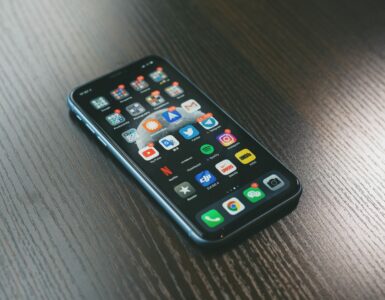Mobile technology has undergone significant revolutions in generations past. Each new generation has had some improvement from the previous network. But, 5G technology has had the most upgrade of 4G. 5G, the fifth generation of wireless networks, has brought about a bigger and better performance of cellular networks. Speed is one of the distinct features of 5G as it is significantly faster than 4G.
Difference Between 4G And 5G
In the recent past, 5G has been a buzzword in the world of technology. And you may have wondered why you need to move to it while you are satisfied with 4G.
Let’s look at a clear distinction between the two and the reason behind the excitement.
With 5G, you will be able to do the same things you’ve been doing with more reliability and within the shortest time possible. The 4G network is very crowded, and all these devices are competing for the same bandwidth hence slowing down the network.
5G, on the other hand, can handle up to a million devices within a square kilometer without affecting the speed. Regardless of the number of devices connected, there is no fear of the network dropping.

How Fast is 5G Compared to 4G?
5G is up to 100 times faster than 4G.
5G can reach 10 gigabits per second as required in IMT-2020. Making it 100 times faster than 4G.
Do you wonder what makes 5G this fast? The communication principle is, “The shorter the frequency, the higher the bandwidth.” Bandwidth refers to the highest amount of data transmitted over a network within a given time.
5G has employed millimetre waves that are between 30GHz and 300GHz. These shorter frequencies are the reason behind the high speed and latency, capacity, and quality.For this reason, it can deliver high performance with several devices connected. For example, if you download an average movie on a 4G network, it takes about 50 minutes, whereas, with 5G, it only takes 9 minutes.
However, the connectivity requirements differ from how you use the connection. For example, streaming live on your mobile gadget demands different connectivity from driving a connected car. These options are not available on the 4G network.
5G Has a Lower Latency Rate Compared to 4G Network
The performance you experience in 5G has a lot to do with its low latency rate.
Latency rate is the amount of time taken to send information from the source to the destination. In 4G, it takes up to 200 milliseconds for information to reach the receiver, while in 5G, it only takes one, which is a significantly lower millisecond.
Such a significant reduction in delays will motivate the manufacturing of new devices and services. Some of which include connected cars, information sharing between vehicles, remote surgery, and virtual reality gaming, among other awesome stuff.
In short, 5G will power IoT in a great way to make the world a better place. Low latency is vital to some applications like self-driving cars. This allows information needs to be sent to the cloud to trigger a decision and take action. For example, when breaking the vehicle to avoid a barrier in real-time. With 4G, this is challenging because the latency rate is higher and thus inefficient for such applications as self-driving cars and gamers.
5G Has Made Network Slicing Much Easier
Network slicing is the process of dividing a single network connection into numerous individual networks using network virtualization. This helps in handling traffic coming to the network from various sources, and that serves different purposes. For example, if you are operating multiple uses such as connected cars, smartphones, smart homes, etc. You can slice the network to fit each of these uses perfectly.
Based on the needs of the use case, optimized resources like capacity, speed, and connectivity are available.
While 5G allows network slicing, which enables service providers to build virtual networks from end to end to serve specific applications, 4G networks do not have such capabilities.
5G allows users to choose features they need to meet a particular spectrum efficiency level. That is the density of the connection, number of connected devices, and traffic capacity. This ensures the speed is suitable for that particular usage.
Conclusion
5G has not replaced 4G, just as 4G did not replace 3G and the previous network generations. Hence, this does not mean that 4G has been nullified or is no longer functional.
5G is here to complement and improve on what 4G could not deliver best. Because of the modifications explained above, 5G is a lot faster, reliable, and is the better companion for IoT.












